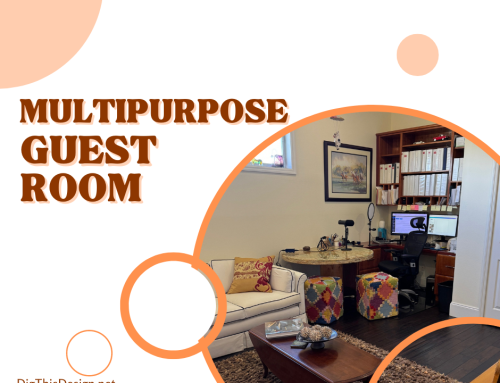Interior painting revitalizes your living space, enhances aesthetics, and reflects personal style. Proper preparation, color selection, and techniques are key to achieving a professional finish. Fresh paint can increase property value and create a more inviting atmosphere, making your home beautiful and functional.
An 8-Step Guide for Interior Painting

Design by Patricia Davis Brown Designs, LLC.
Why Interior Painting Matters
Interior painting is more than simply a touch-up for appearances; it’s essential for creating the ambiance and mood of your house. Applying a new layer of paint can rejuvenate a space and create a fresh and welcoming atmosphere. Whether you’re looking to improve your living space or prepare a property for sale, interior painting is an important consideration. This site https://www.fivestarpainting.com/overland-park/residential/interiors/ highlights how interior painting can transform your home’s looks and feels, adding a sense of cleanliness and sophistication that boosts overall home appeal.
According to Architectural Digest, the right interior painting colors can positively impact your mental health. Interior painting can elevate a home’s style quotient while increasing its value in a world where first impressions matter; the colors on your walls can say a lot about you. Utilizing different shades and textures can also help define spaces within a home, making open-plan areas feel more distinct and organized.
Choosing the Right Colors
Selecting a color scheme might be difficult. Interior painting Colors can affect emotions and perceptions in different ways. For instance, blue hues often create a calm and serene environment, whereas red can evoke energy and passion.
Lighter colors can make a small space look more prominent, while darker shades add coziness to a big room. Color psychology plays a vital role in interior painting; understanding how different colors influence mood can help you make more informed decisions.
For those who find the color selection overwhelming, resources like HGTV offer great tips on selecting the perfect shades for your space. It’s always a good idea to get a few sample pots of paint and apply them to the walls to see how they look in natural light at different times of the day. Testing samples can reveal the subtle undertones you might not notice in a paint chip, thus helping you avoid unwanted surprises.
Preparing Your Home
Interior painting requires a great deal of preparation. Ensuring your walls are clean, dry, and smooth can significantly affect the final result. First, remove furniture and cover floors to protect them from paint splatters. Next, sand the surfaces, use a primer if the walls are incredibly porous or if you’re changing the color drastically, and fill in any holes or cracks with spackle. A good primer ensures better adhesion and provides a uniform base for the topcoat, making the final color more vibrant and long-lasting.
To avoid accidental paint smudges, don’t overlook minor details, such as tape around windows, trims, and fixtures. In the long term, thorough preparation can save you time and work by lowering the need for touch-ups later on and guaranteeing a more polished result.
Techniques for a Professional Finish
Achieving a polished, professional finish requires more than just a steady hand. Employing painter’s tape for accurate lines, “cutting in” for corners and edges, and administering several thin coats instead of one thick coat can all make a difference. For best results, start with the edges and corners using a smaller brush, then switch to a roller for the main surfaces. Recall that your partners in this process are diligent and patient.
Another essential technique is maintaining a wet edge, ensuring that each brushstroke blends seamlessly into the next. This reduces the risk of visible lines and uneven texture. High-quality brushes and rollers can also contribute significantly to the result, providing a smoother and more consistent finish.
Eco-Friendly Paint Options
With growing environmental concerns, many homeowners are opting for eco-friendly paints. Because these paints contain fewer volatile organic compounds (VOCs), your family and the environment will be safer using them. When looking for more environmentally friendly solutions, look for labels like “Low-VOC” or “Zero-VOC.” This is especially important if anyone in your home has allergies or respiratory issues. These paints also reduce the impact on indoor air quality, creating a healthier living environment.
When choosing eco-friendly options, it’s also beneficial to consider paint brands committed to sustainable practices. This may include using recycled materials or implementing eco-friendly production methods. Brands like Benjamin Moore and Sherwin-Williams have introduced eco-friendly lines that do not compromise on quality or color variety, making it easier for consumers to make environmentally conscious choices.
Costs and Budgeting
Painting your home interior can range from budget-friendly to luxurious. The cost will vary depending on how good the paint is, how big the space needs to be painted, and whether you employ experts or do it yourself. Premium paints offer richer colors and better coverage but come at a higher price. On the other hand, opting for a DIY approach can save labor costs but requires time and effort.
Plan your budget carefully to ensure the best results without breaking the bank. A few typical mistakes include using the incorrect paint for a given surface, hurrying the process, and omitting the primer. Remember to factor in the cost of supplies like brushes, rollers, painter’s tape, and drop cloths. Comparing estimates from different professionals can also give you a better idea of the market rates and help you find the best value for your investment.
Maintaining Your Painted Walls
Maintenance is essential to keep your walls looking fresh and new. Regular cleaning with a damp cloth can remove dust and stains. For more challenging spots, mild soap and water should do the trick. Always use gentle, non-abrasive cleaners to avoid damaging the paint. High-traffic areas like hallways and entryways require frequent touch-ups to maintain a pristine appearance.
Periodically inspect your walls for chips or scuffs and touch up the paint as needed. Matching the original paint color can be challenging, so keep a record of the paint brand and shade used. For a seamless touch-up, always use the same type and finish of paint as the original application.
Common Mistakes to Avoid
Even the most well-intentioned DIY painters can make mistakes. Some typical errors include using the incorrect paint for a given surface, hurrying the process, and omitting the primer. Rushing can lead to uneven coats and visible brush strokes while skipping the primer can result in poor adhesion and durability.
Take the time to do your research and plan each step. Invest in high-quality tools and materials; don’t be afraid to seek professional advice if needed. A well-executed paint job can significantly enhance your home’s aesthetic and value. Patience and meticulous preparation can prevent common mistakes and ensure a beautiful, long-lasting finish.
Other posts you might enjoy:
Unlocking Wall Art Mastery: 5 Tips To Transform Your Home Interior with Wall Artistry
4 Interior Decorating Tips to Fit Your Interior Design Style





